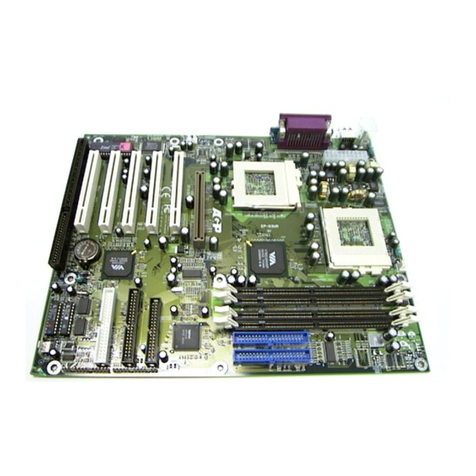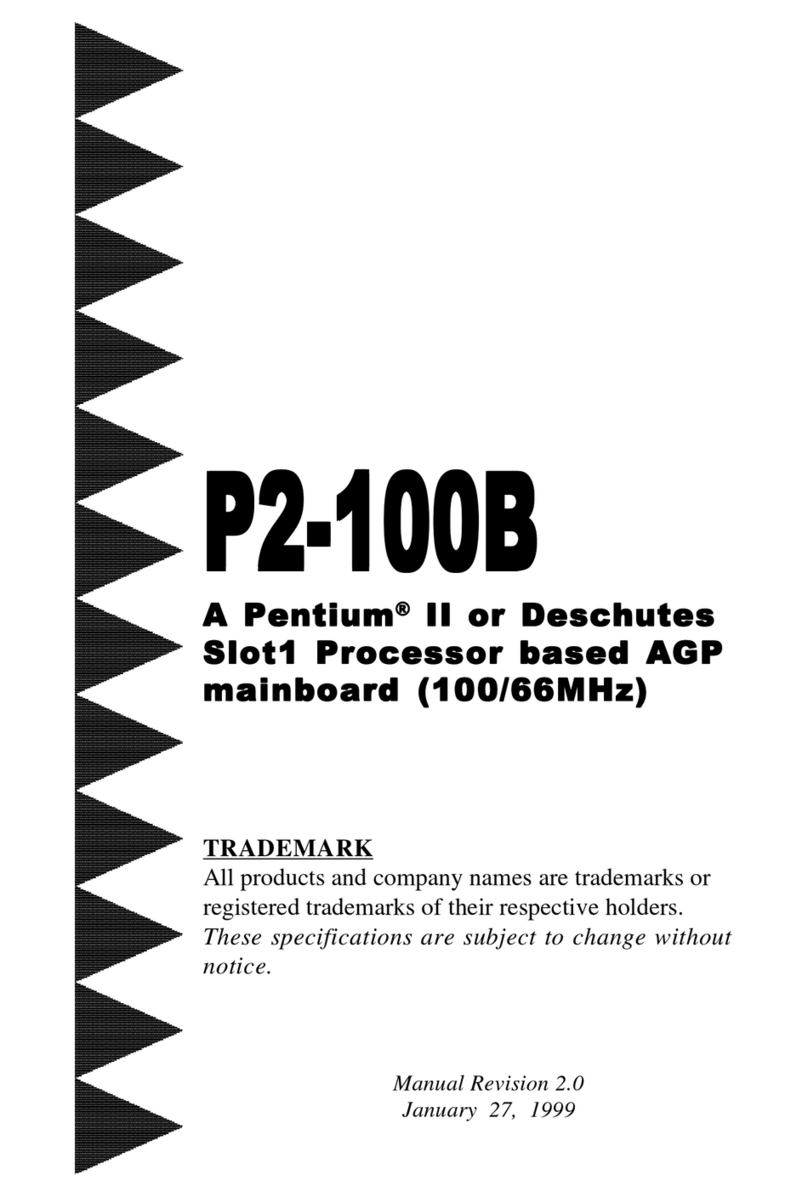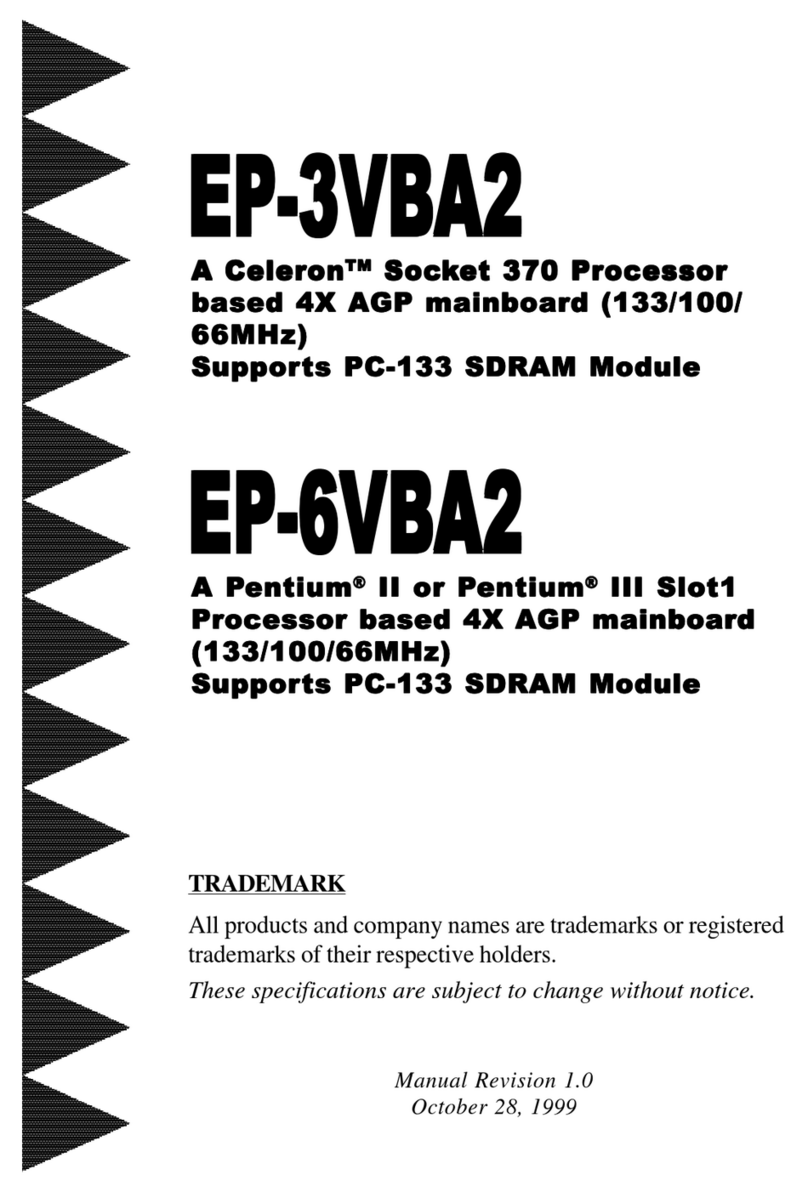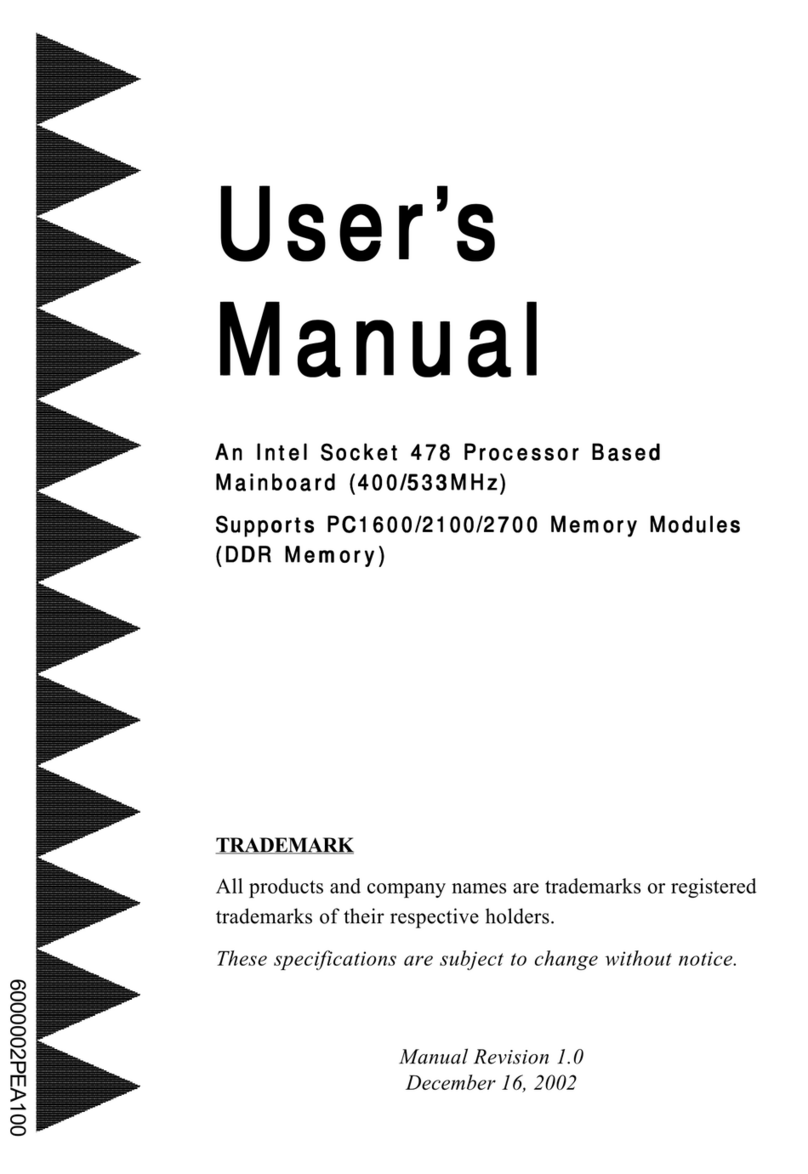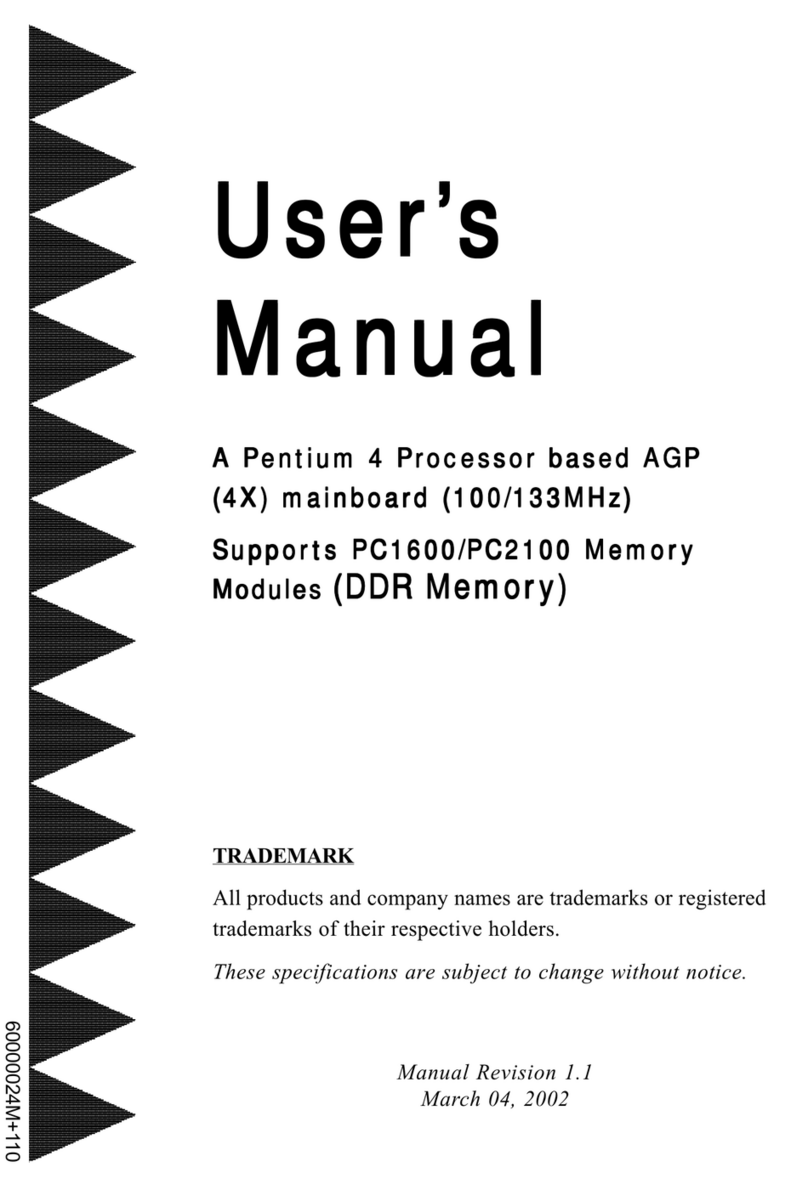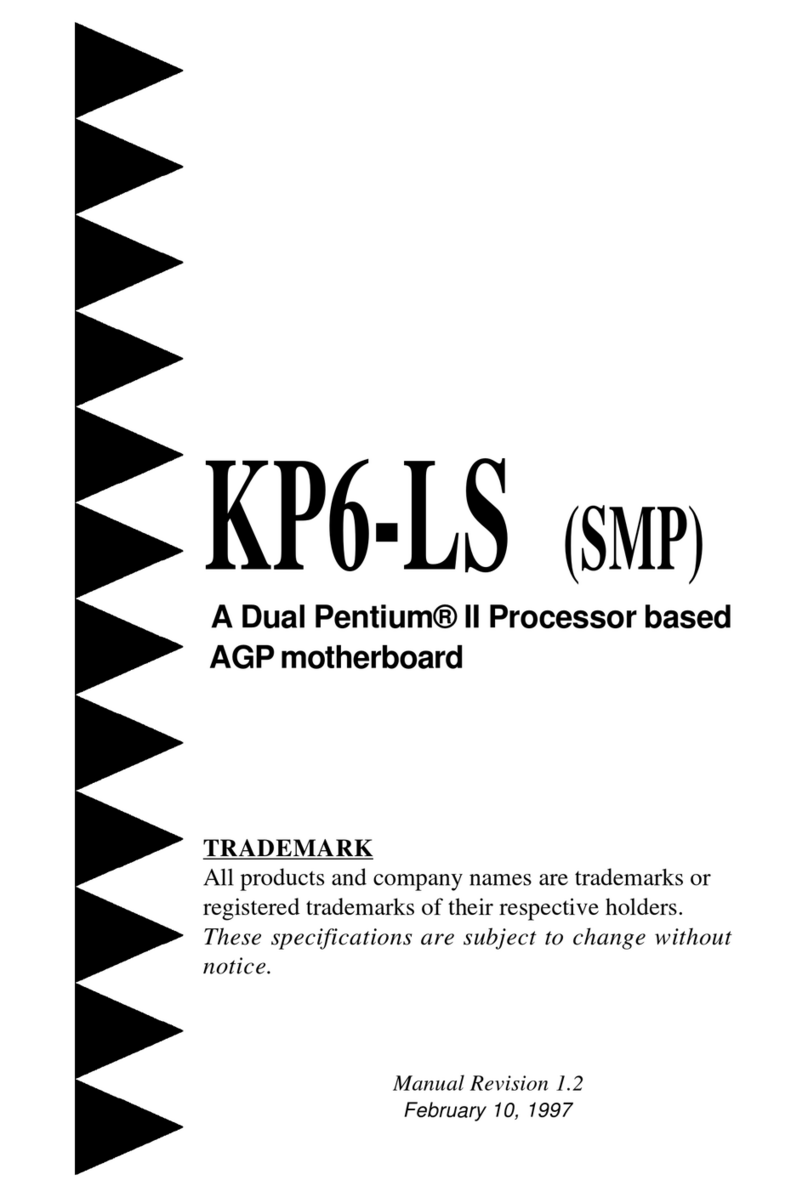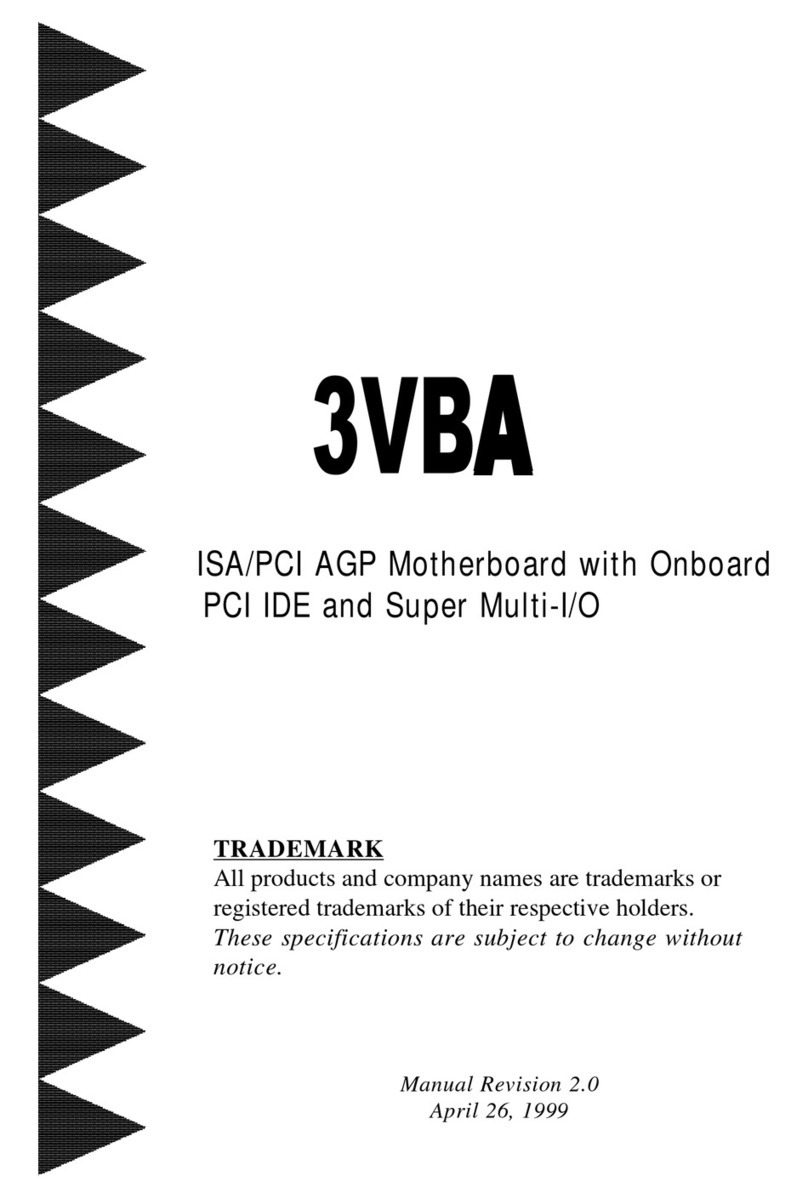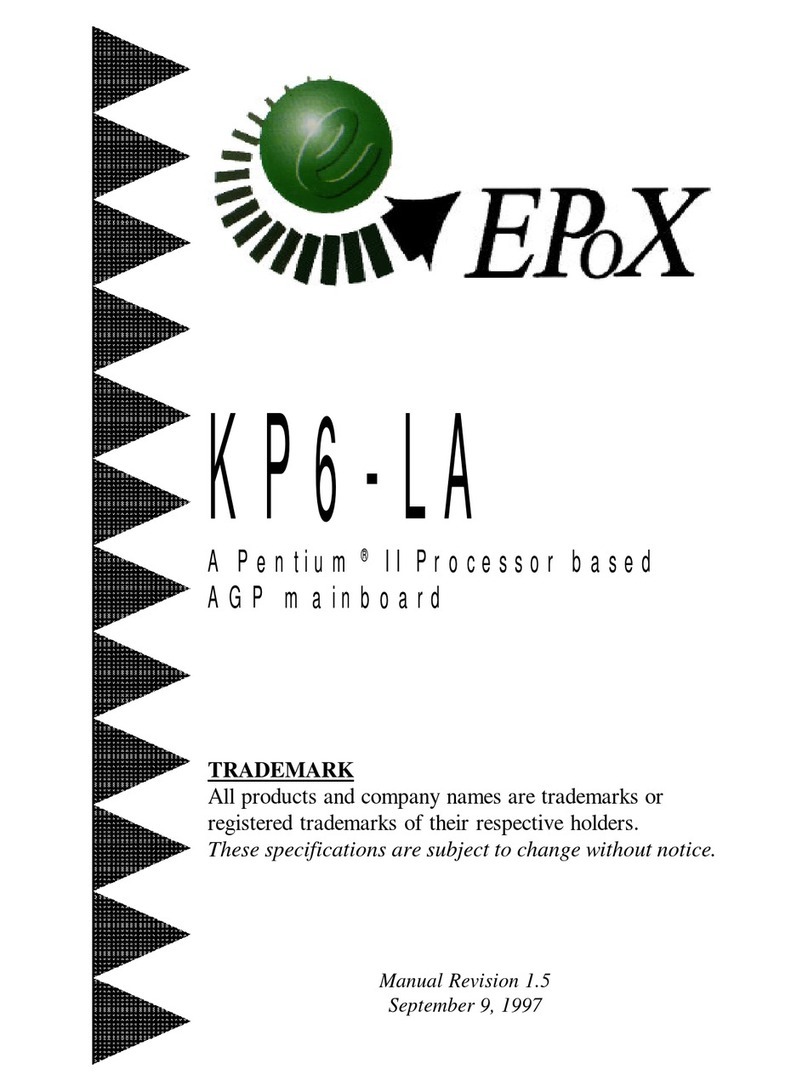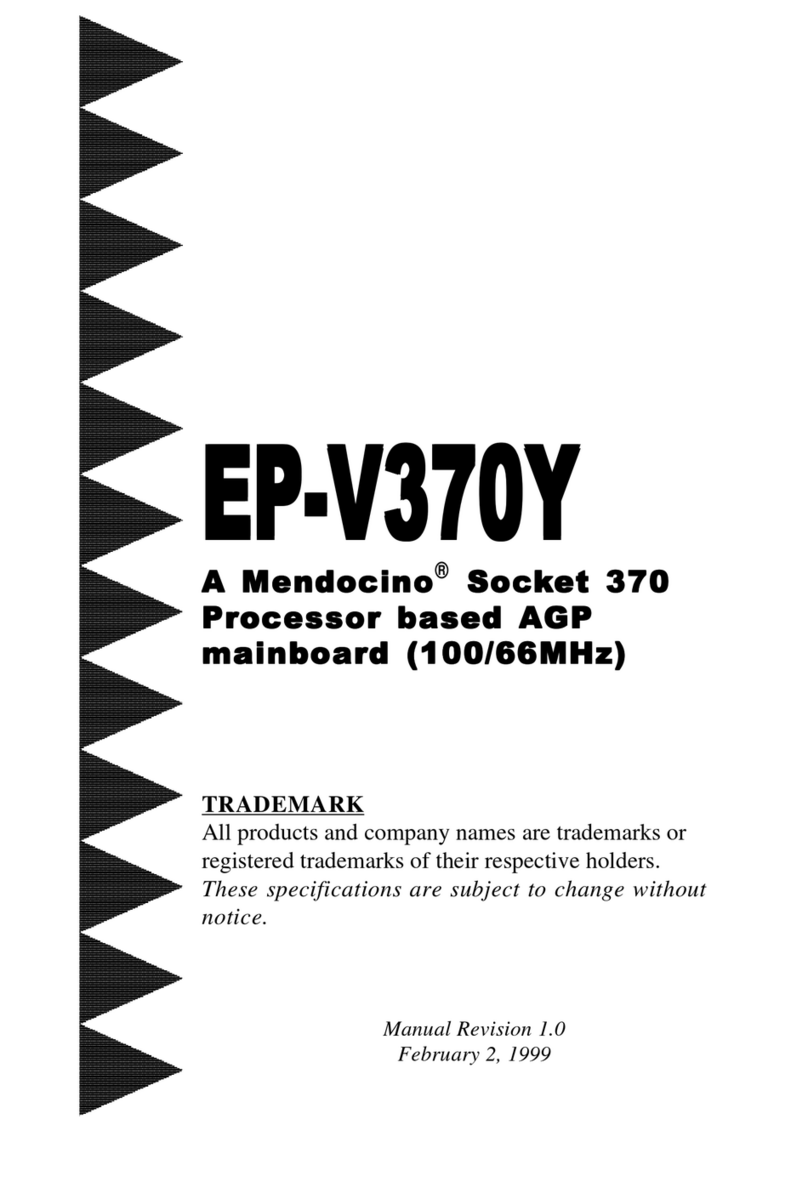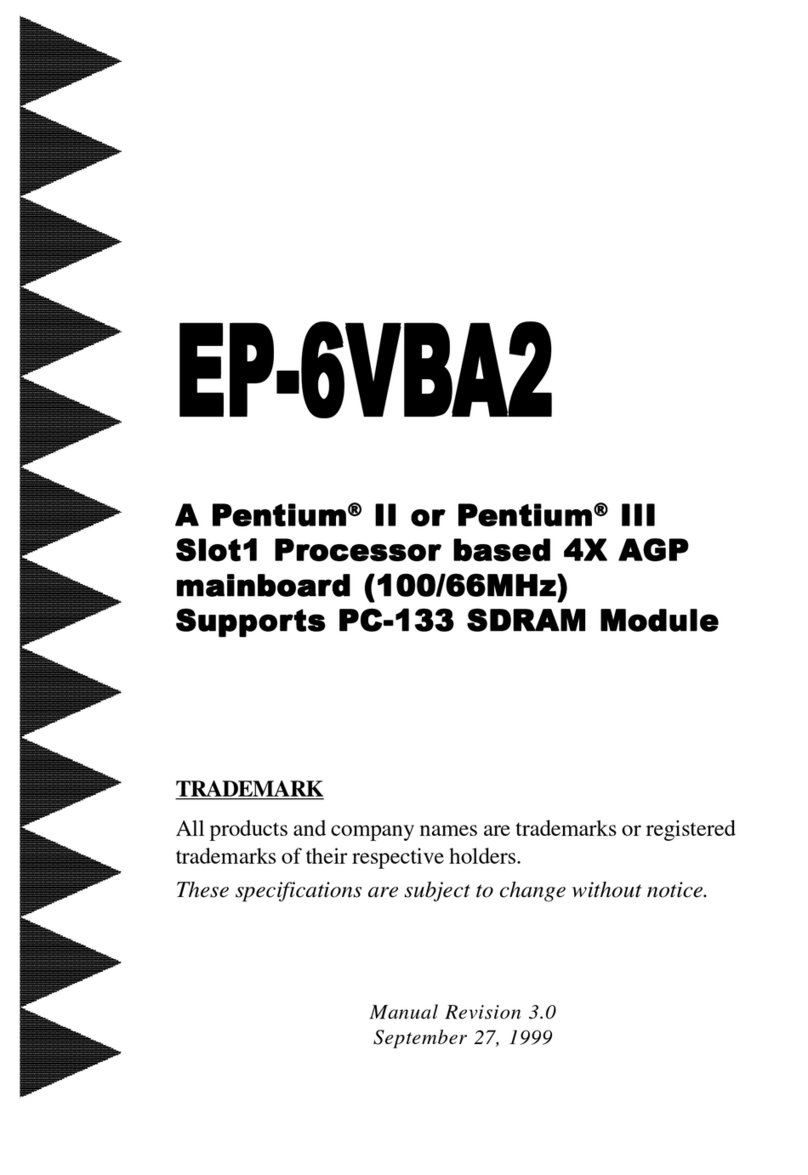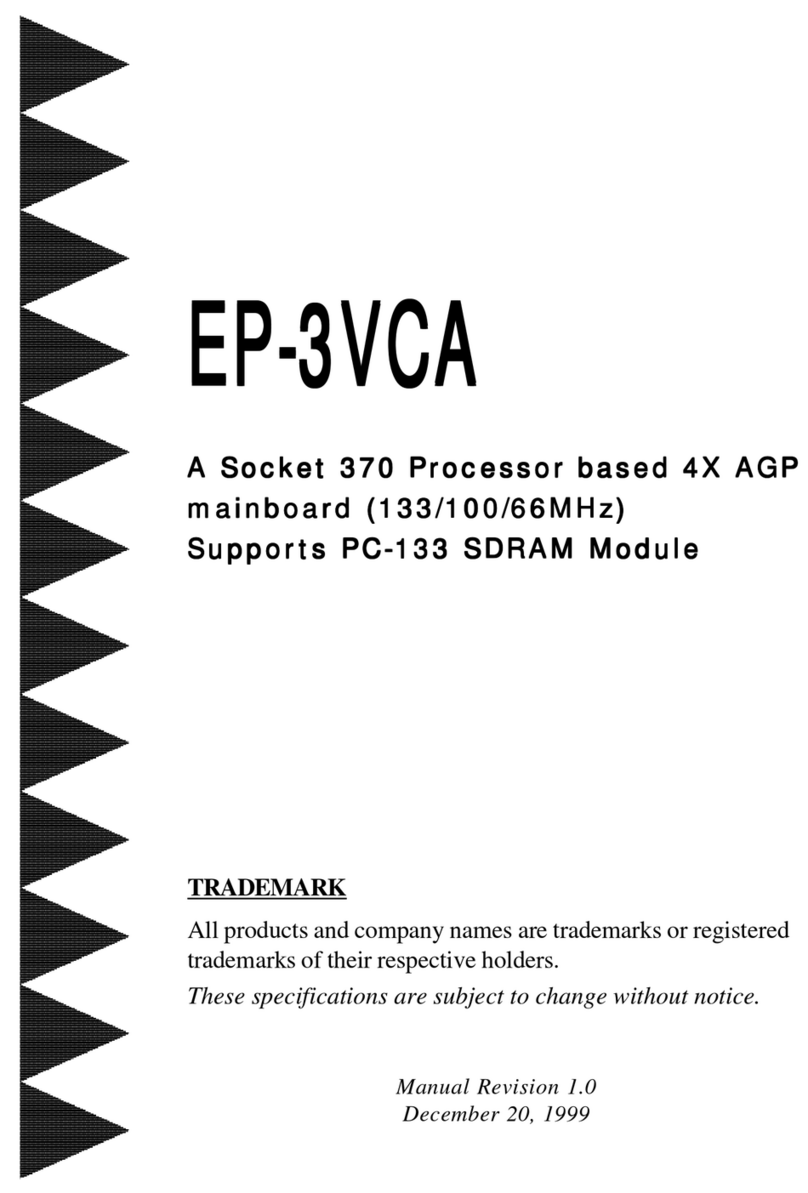Installation
BX5
Page 4
Easy Installation Procedure
Easy Installation Procedure
The following must be completed before powering on your new system:
Configure Jumpers
System memory Configuration
Device Connectors
Configure Settings
The following will describe all of the setting that you are required to set before
moving on to step 2.
ROM PCI/ISA BIOS(2A69KPAG)
SENSOR & CPU SPEED SETTING
AWARD SOFTWARE, INC.
Auto Detect DIMM/PCI Clk : Enabled
Spread Spectrum Modulated : Disabled
CPU Host/PCI Clk : Default
CPU/AGP Clk Ratio : Default
CPU Int Clk Ratio : x3
CPU Clk Frequency : 300(100x3) MHz
CPU:AGP (Clk:Clk) : 3:2 (100:66)
CPU Vcore Voltage : +0.10V
CPU Vcore Voltage : 2.10V
** BIOS Writer Utility **
Checksum Error Detect : Both
Source : A:
Target : Mater
Go : Enter
CPU Warning Temperature : Disabled
Extended JP2 Temperature : 0OC/32OC
Current CPU Temperature : 0OC/32OC
Current System Temperature : 0OC/32OC
Current POWER FAN Speed :4900 RPM
Current CPU FAN Speed : 4900 RPM
Current CHASSIS FAN Speed : 4900 RPM
Vcore : 2.10V Vtt(V) : 1.55V
Vio(V) : 3.47V +5V :5.02V
+12V : 12.40V -12V : -11.95V
-5V : -5.50V VBAT (V) : 3.44V
5VSB (V) : 5.08V
Shutdown Temperature : 60OC/140OC
Esc:Quit : Select Item
F1 : Help PU/PD/+/-: Modify
F5 : Old Values (Shift) F2 : Color
F7 : Load Setup Defaults
éé
éé
é
êê
êê
ê
èè
èè
è
çç
çç
ç


